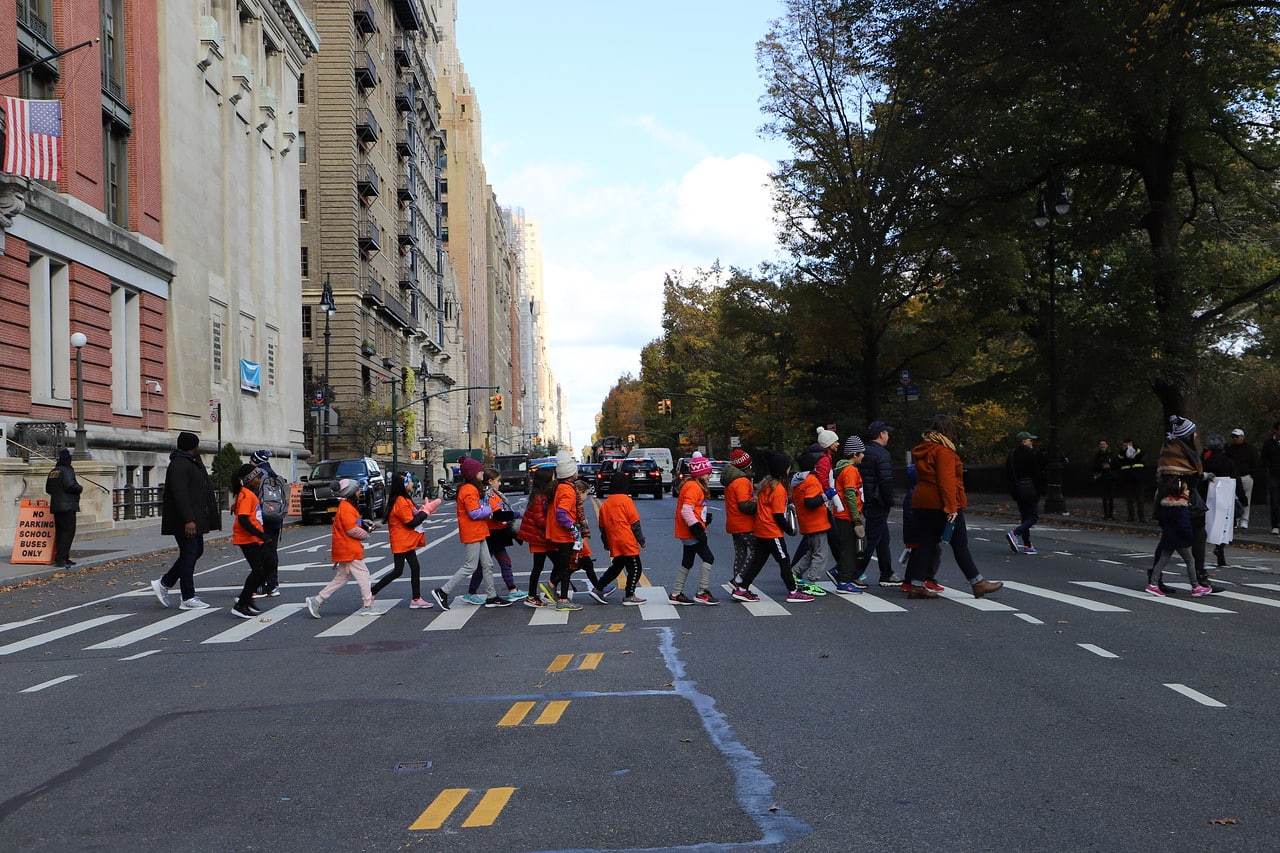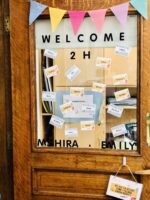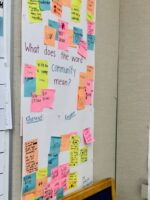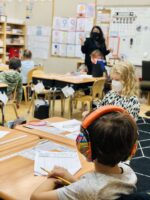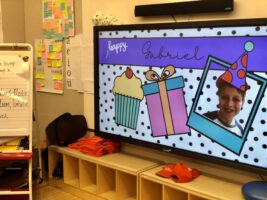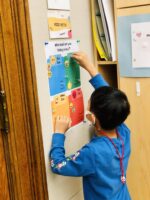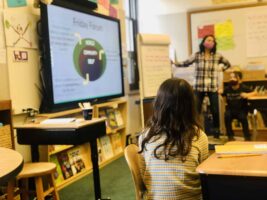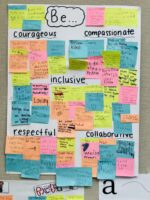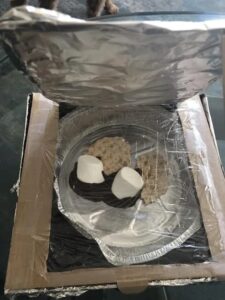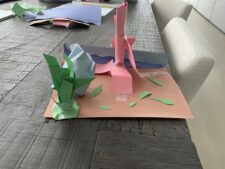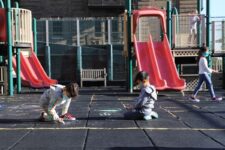A patter of rain lightly taps the window panes of Radhika Hira’s 2nd Grade classroom as students settle in for the day. It’s a stormy, yet unseasonably warm, November day at Ethical Culture.
“Don’t worry everyone! It’s raining now, but it’s going to stop soon. The party is still happening,” Gabriel S. ’32 reassures his classmates. It’s Gabriel’s eighth birthday and the students of 2H are excited to celebrate with him after school.
This is the 41st day of Ethical Culture’s school year, and the students are accustomed to their daily routine — one that includes concrete steps towards fostering a sense of community.
“Community building translates through everything that students experience in the classroom,” Hira says. “Even their schedule was designed around building a sense of community. They know which tasks they need to complete in the morning, so that the rest of the day will run smoothly for everyone in the room.”
With little instruction, the students begin a set of tasks before their morning meeting begins. They quietly turn in their reading logs, complete a warm up math and writing worksheet, and add a tack to the mood meter located in the front corner of the room. This mood meter encourages each student to identify how they are feeling according to four colored zones using a thumbtack. (Red indicates they are feeling angry or anxious, and yellow represents excitement. Students select blue if they are sad or tired and green if they are calm, happy, or feeling “just okay.” Later, each student will have an opportunity to share how they are feeling with their peers. Once they are finished with these tasks, some students settle in to draw or read, while Isabella V. ’32 quietly waters the classroom plants on the windowsill using a small, tin watering can.
At the top of their morning meeting — 8:45am on the dot — the class begins to cheerfully sing “Happy Birthday” to Gabriel. Beaming, Gabriel thanks the class and begins to share his mood meter. “I’m feeling excited because it is my birthday. My party is going to be very fun, and I am really happy that everyone is coming.”
“Who else is excited for Gabriel’s birthday party?” asks Hira. Everyone in the room eagerly responds with two thumbs up.
Hira emphasizes the importance of extending their community outside of the classroom. The students of 2H often gather together after school to celebrate birthdays and significant milestones. “We encourage them to celebrate and support their peers in every possible way,” says Hira.
The first step for younger learners in building community is understanding concepts of membership and belonging. Teachers and students grapple with important questions together: What does it mean to be a part of a bigger community? Where can you find connection outside of your home or neighborhood?
“In a 2nd Grade classroom, community building and social emotional learning work go hand-in-hand. They cannot be separated,” Hira says. “If you do not have a clear understanding of your social emotional well-being, and that of another, it will be hard to understand the ideals of community.”
Within the first few days of school, Hira and her co-teacher, Emily Supron, had their 2nd Graders collaborate to define a set of community norms for their class. The teachers wrote “What does the word community mean?” on an easel-sized piece of paper, and, using sticky notes, the students added their answers.
Soon enough, the piece of paper was covered with a rainbow of sticky notes. The answers ranged from “being in synagogue” to “being with a group of friends.” One student simply wrote “community is love.”
Once each student offered their definition of community, they decided together which five characteristics would define their classroom community for the remainder of the year. On a separate piece of paper, they used brightly colored markers to write: “2H will be courageous, compassionate, respectful, inclusive, and collaborative.”
Building community is equally important among faculty. Hira is a first-year teacher who was drawn to ECFS because of its community. “I felt 100% embraced by Ethical Culture from the beginning,” Hira says, noting that the School observes Diwali with a day off from school so that families can celebrate. “If that’s not a welcoming embrace into a community, I don’t know what is,” she says. “That is a true recognition that cultures and practices need to be respected. That was huge.”
4th Grade teacher Liba Bronstein-Schwartz has been teaching at Ethical Culture for 11 years. “I can’t imagine working anywhere else. Ethical Culture aligns so closely with my personal values. I feel like I’ve grown so much professionally, but also personally alongside my colleagues,” she says.
At the beginning of the pandemic, a confusing and taxing time for educators everywhere, Bronstein-Schwartz found that she and her team were able to lean on each other for support both inside the classroom and out. They had already fostered a strong sense of community, she says. “We all know when to step in and support each other.”
After students develop a sense of self and of community in the classroom, they advance to understanding civic engagement. In Bronstein-Schwartz’s 4th Grade classroom, there’s an image on the wall of three concentric circles. The word “world” encircles “community,” which then encircles “self.”
“We think about how to grow as individuals and how our growth impacts the community and eventually the world we live in. We aim to teach them completely through this lens. We talk a lot about current events and social justice, and the ideas of community are woven through everything we discuss,” Bronstein-Schwartz says.
Each week, Bronstein-Schwartz’s students participate in what she calls “Friday Forum.” Typically, Friday Forum consists of three questions. One is related to the world, one related to their community, and another related to their individual growth. Students gather in pairs to actively interview and listen to their partner’s responses to each question. Then, Bronstein-Schwartz encourages them to share with the rest of the class.
This week, students were particularly excited to share question number two: “What is something you appreciate about our 4L community?”
Harrison H. ’30 raises his hand right away. “My partner was Demela. She appreciates that our community has people who understand other people’s thoughts and opinions.”
Everyone in the room nods and smiles in agreement.
Back in Hira and Supron’s classroom, students are settling down after the excitement of their morning meeting. As the students organize their desks and prepare for the next activity of the day, the storm clouds retreat and sunshine floods the room.
“Gabriel, look!” shouts Asher N. ’32. “You were right! It stopped raining. Your birthday party will still happen!” Together, the students of 2H clap and cheer in celebration.
“This work is ongoing, but I’m so proud of the community we’ve already built in my classroom. They truly value each other,” Hira says. “They are really honest now. That is the beauty of 2nd Grade. I can see that they feel like they are a part of this loving, safe space from the way they interact with one another. It’s a wonderful thing to witness.”
